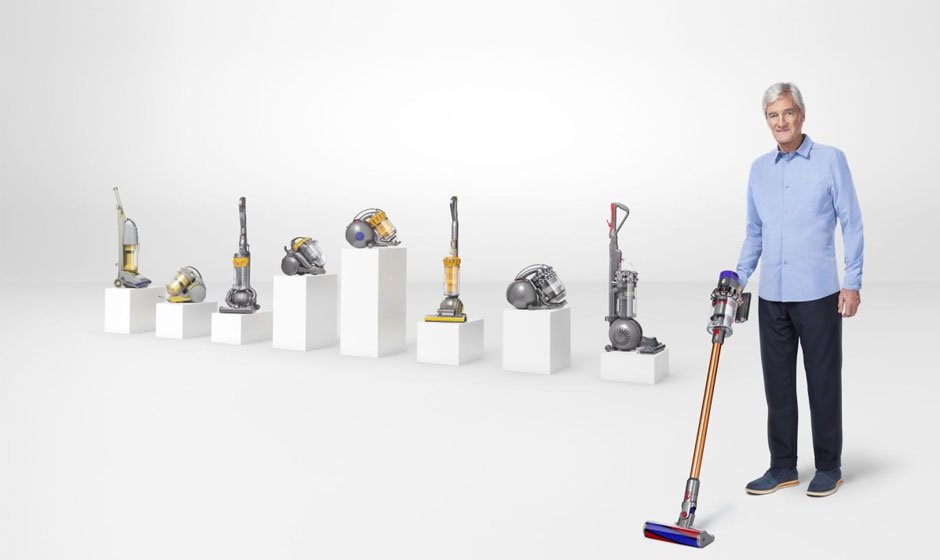The Evolution Of The Vacuum Cleaner

The kids have made a big mess all over the living room, apparently a bag of crisps somehow exploded into a thousand tiny particles that have fallen across the carpet like a light dusting of snow. It’s a disaster, but fortunately, you have an ally waiting in the hall closet to come to your aid- your vacuum cleaner!
It’s hard to imagine what life was like before this modern marvel, you would be down on your hands and knees with a tiny broom and dustpan trying to sweep up all those sticky little crumbs! Now you just switch on your bagless vacuum and zoom over the mess as all the debris is sucked up without you having to break a sweat! What a wonderful invention, but how did it come to be? Let’s find out, shall we?
The story begins back in 1860 in the town of West Union, Iowa, USA when Inventor Daniel Hess patented his “carpet sweeper”. The device featured a sweeper brush that rotated while a bellows system created suction to pull air up through two water-filled chambers where the dust and dirt were captured. Unfortunately, while it was the talk of the town, Hess’s carpet sweeper sadly never got put into production.
Inspired by Hess’s abandoned design, Chicago’s Ives McGaffey patented his version of the carpet sweeper in 1865. McGaffey’s device was operated by a hand crank that made it difficult to use since you had to keep turning the crank while pushing it across the room! It wasn’t a success because the tired user would get cranky.
The next ancestor of the modern vacuum cleaner was a massive machine that had to be mounted on a horse-cart to haul it around town, but it was the most successful attempt yet! H. Cecil Booth of England designed a gas-powered internal combustion engine vacuum cleaner that could be taken from place to place to perform its duties. The nobility loved it, and the design was a big hit! That generation of early vacuum cleaners were beyond the means of the average citizen due to their large size, noise, and noxious exhaust fumes, but they did spawn further improvements.
The next big development in the burgeoning industry was created by James Murray Spangler, who was working as a janitor in Ohio in the 1920s. He put together a pillow case, a broom handle, and a soapbox, added an electric motor, and VOOM! The modern vacuum cleaner was born! Spangler sold copies of his machine to area housewives, and one of them, Susan Hoover, showed it to her entrepreneur husband William. Mr Hoover bought the design rights from Spangler, then set up a factory to mass produce this amazing achievement, thus founding the Hoover Electric Suction Sweeper Company!
Hoover continued to improve on his product and built the first vacuum cleaner made of plastic in the 1930s. This eventually led to the form we see in modern devices, and by 1952 the Hoover Company was famed for its “vacuums”!
The vacuums of the 1960s were lighter weight and more convenient to use. The hotel industry made much use of a portable vacuum built by the Oreck Corporation. The housekeepers loved it so much they begged Oreck to produce a version they could use in their homes, which they then marketed for public consumption.
Following the first Hoover, all of the vacuums collected the dust and debris they sucked up from the carpet in bags. In the 1970s, inventor James Dyson went to work on a vacuum cleaner that didn’t require a bag at all. His idea took some time to reach fruition, after building five thousand, one hundred and twenty-seven prototypes, Dyson achieved his goal, the Dual Cyclone Machine. This proved to be a major success, and his bagless technology eventually came to almost completely replace the bagged vacuum.
Things didn’t stop there however, there was still another major breakthrough to be made in household vacuuming! Electrolux of Sweden revealed the first robotic vacuum cleaner in 1996. While a deadline grabber, the contraption was a market failure because its primitive sensors couldn’t stop it from crashing into the furniture!
Those shortcomings were overcome by the Roomba, which was introduced in 2002 by the iRobot company. The Roomba’s advanced sensors can easily navigate the home, and even avoid careening down stairways!
The vacuum is still evolving as it sucks its way toward the future!



